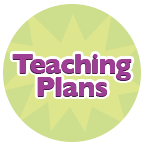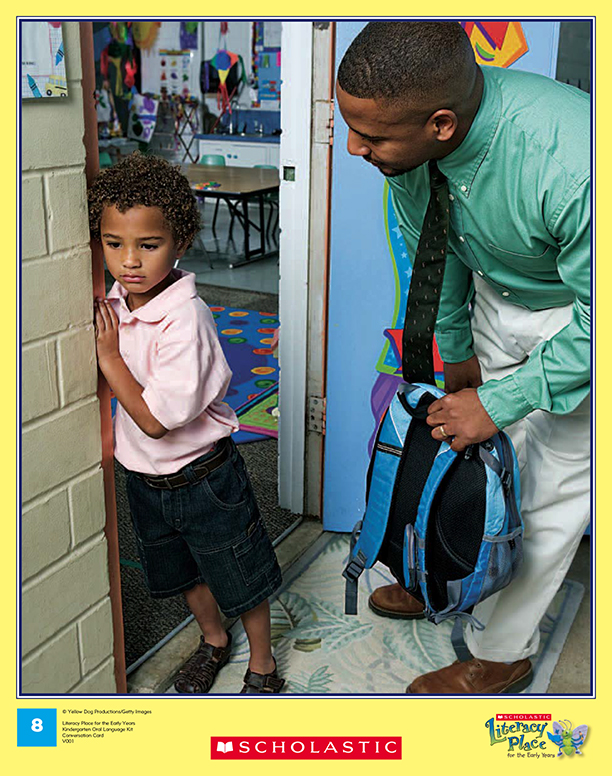Oral Language Teaching Strategy:
Role-Play – Explore Other People’s Viewpoints Use role-playing to stimulate social language development and problem solving.
Time: one 30-minute lesson or two 15-minute lessons
Materials: Emotions/Interactions Card #8
Grouping: whole class or small group
Assessment: Kindergarten Oral Language Assessment Scale
FOCUSING ON THE PICTURE
[Analyzing/inferring]-
What do you see in the picture? What do you think is happening?
Show students the picture. Ask them to look at it and think about what they see and what they think is happening.
-
Invite each student to share their ideas about the picture with a partner.
- Provide time for partner discussion and then invite a few partners to share their thinking with the group.
[Analyzing/inferring]
- Offer prompts to stimulate discussion:
- Who are the people in the picture? Let’s give them names.
- Where do you think they are?
- What do you think is happening? Why do you think that?
- We don’t know exactly what is happening. It’s okay to suggest different things that make sense and fit with the picture.
GOING DEEPER
[Inferring/evaluating]- Offer prompts that focus the students on the emotions and interaction portrayed:
- How is the little boy feeling? How do you know?
- Why do you think his dad is holding on to the backpack?
- What do you think his dad is saying? How is he saying it?
(e.g., gently, angrily, sadly, cheerfully) Why do you think this? I’m going to pretend to be the little boy and say, “Dad, I don’t want to go to school because my best friend has moved away and I won’t have anyone to play with.” If you pretend to be the dad what would you say? How would you say it? Would you say it in a happy voice, a loud voice, a sad voice?
Role-play the interaction by taking the part of one character and inviting students to take on the role of the other character.- Once you have practised taking parts together, ask students to role-play the conversation between the child and his father with a partner.
Teaching Tip: If you do this role-play early in the kindergarten year, you may decide to take the role of one person and invite the class/group to share ideas about what the other person would say. Once you have practised this type of supportive role-playing several times, you could try partner role-playing.
You may conclude the lesson at this point and do the second part on the next day, or you may decide to continue and do Connecting and Predicting as part of the first lesson.
CONNECTING
Teaching Tip: If you decide to do Connecting and Predicting on the second day, begin your lesson by reviewing the picture with the students.
[Making connections]
- Ask students to connect their personal experiences with the emotions and interactions in the picture. Prompts might include:
- Have you ever felt like that little boy? What was it that made you feel
like the little boy? - What do you usually feel about coming to school? Why do you feel this way?
- How do your mom and dad help if you feel sad?
Have you had a friend who moved away? How did you feel? What did you do?
Offer specific prompts that fit the discussion you have had with the group.
PREDICTING
[Predicting]-
What do you think will happen next? Why do you think this?
Ask students to think about what could happen after the scene shown on the photograph.
- The group could choose one possible scenario and act it out with partners.
LESSON EXTENSIONS
-
Use the picture as the basis for a shared writing lesson. Collect ideas from the students and collaborate on building 2 to 3 sentences about the scene.
- Use the shared writing account as a shared reading text and reread with the students.
FOLLOW-UP IN CENTRES
-
Suggest that students re-enact the scene on the photograph, or their predictions for what occurred after the photograph, with a partner during centre time. They may wish to use puppets or just pretend to be the characters. You may need to model this first.
-
Encourage students to re-enact other social situations in centres, e.g., solving a problem in the playground, making friends with someone, talking to a parent about how to thank someone or how to tell a sibling what you are feeling. Again, students can pretend to be the characters themselves or use puppets for role-playing.

